
The mining industry in South Africa has a reputation of being staid and set in its ways, being content to continue using labour-intensive practices rather than introducing new technology. A visit to Lonmin Platinum (Lonmin) and in particular its smelter and base metal refinery (BMR), dispelled that image for me forever, as the engineering staff here are at the forefront of control technology. While others still talk of the possibility of using PCs for open control applications, the Lonmin smelter is running smoothly using PCs operating under both Windows 95 and Windows 2000, packages long eschewed by the PLC fraternity as being too unstable for critical operations. While Lonmin Platinum sources its concentrate from several mines in the immediate area, including the Eastern Plats, Western Plats and Karee mine, there is only one smelter and its continual operation is essential, which is why it is equipped with massive dual power generators which kick in if Eskom power fails for any reason. If this is not a hypercritical control application - what is? - Windows has proved to be an extremely stable platform.
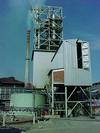
For those unfamiliar with the operation of a platinum refinery the underground ore from the mines comes to five concentrator plants where milling and flotation processes are used to increase the concentration of the most valuable element, platinum, to some 300g per ton. The next process is smelting where fluidised bed reactors, cyclones and other heating processes concentrate the ore further to 5000g per ton and it is this enhanced concentrate which passes through to the base metal refinery which produces a 50% pure metal. As the Lonmin refinery is a much more recent installation than the smelter it is already running a DCS system, which has been continuously upgraded over the years.
The pioneers behind the introduction of PCs running Windows at Lonmin were Hannes Zandberg and Norman Pingo who are responsible for the operation of both the smelter and the BMR, which are located close to Marikana in the North West Province. The smelter was constructed in 1970 and until recently had an outmoded control system based on PLCs. In looking for a more open, more cost effective and less labour-intensive control system, Zandberg and Pingo after careful study decided to avoid the conventional PLC or DCS solution and to move into the relatively uncharted territory of direct PC control.
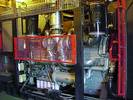
Their opportunity to try out this revolutionary approach arose about five years ago just after the launch of Windows 95. The job at hand was to optimise the operation of the pyromet furnaces that were causing a bottleneck at the smelter. Despite scepticism from some quarters regarding the ability of a PC-based solution to provide a reliable working solution, the engineers persuaded management to part with the R800 000 required, under the career-limiting condition that this would be paid back through greater efficiencies in less than six months (the sort of return most accountants can only dream of). In fact within three weeks one of the three furnaces was fully and reliably operational, the other two following shortly thereafter. Incredibly, the R800 000 was paid back in less than six weeks through the total removal of the bottleneck and the massive increase in platinum output (at today's platinum price the ROI would have been made in even less time).
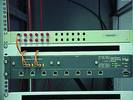
The year 2000 saw a major decision taken by Lonmin to substantially upgrade and modernise the rest of the smelter in a project that was to cost some R350 million. The success with the furnaces this time saw less effort by the traditionalists to influence the decision to go for a sizeable PC-based control system, this time using the latest Windows 2000 software. Scepticism did however result in the need to have every single PC running in parallel with a full backup system with automatic switchover.
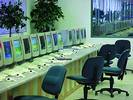
A brief look around the smelter itself shows the impact of the new technology. The main centre of activity is the control room which houses the 32 PCs backed up by a powerful UPS. Each PC has a second identical unit sitting alongside it providing for full automatic redundancy. However Hannes Zandberg was quick to point out that in a full 12-month period of operation there has never been a need to swap systems, real verification of the stability of Windows as the operating system. Beyond this air-conditioned and electrostatically protected control room lies the operations centre where a single supervisor can control a number of plant functions from one of two PCs. A password is required and normal control is generally at the level of safety. Major changes to process parameters, which could affect the feedstock for the refinery, require a metallurgist or other person with a higher level of password access. All the electrical panels and ancillary equipment including routers and the UPS are housed in an area adjacent to the control and operations centre.
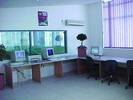
Inside the smelter itself there are a number of supervisory stations with PCs where the status of the process can be monitored, but not controlled except for emergency stop functionality, the latter duplicated for safety reasons by the normal large red and clearly marked buttons located strategically throughout the plant. With its complex system of pneumatic conveyors, cyclones, agitators, drying towers and a 28 MW furnace there is no possibility of running the smelter in manual mode even in an emergency, as according to Zandberg no human being could react quickly enough to the process changes required. In full-automated mode the smelter operates very close to maximum productivity and the feedback systems flag bottlenecks in the process, which can be optimised from the operation and control rooms.
Personnel freed up in the changeover from the old PLC-controlled smelter have been retrained either as supervisors or to carry out more extensive quality control checks, the latter ensuring that a very high level of consistency of the feedstock for the BMR. Input from the quality control data is fed back into the operating system to ensure continuous optimisation, although major changes to the control parameters would still require confirmation from a qualified metallurgist.
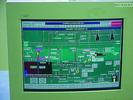
A major project such as this required making use of a specialised team and while Hannes and Norman worked closely with Microsoft on the operating side, the control side was handled by John Mentz and Winston Ilsley of PLC Direct. The wiring of the panels and all the electrics was the responsibility of Dowding Reynard & Associates (DRA). The physical network was installed by FXNet with optical fibre being used on longer runs (and between buildings) and standard copper UTP between panels and the PCs. At this stage the Windows 95-operated pyromet system is not linked into the network, but the plan is to upgrade this control system to Windows 2000 during this year and to have everything integrated onto the single network. The Intel-based network system managed from Windows currently has a total of 15 000 view I/O, each of these being read off every 500 ms. The Windows-based control has a physical hard I/O count of 12 000 with a scan and solve time less than 25 ms.
Being at the cutting edge created its own set of problems for the Lonmin team, but as new issues arose these were promptly addressed by software specialists from both Microsoft and the US developers of the Think & Do software. Think & Do is the top-level software package, which acts as the man-computer interface and it resides above Microsoft Visual\Visio and the Windows 2000 operating system, producing all the normal screen displays required for a control operation. For the US company the Lonmin application was also a new challenge, as the Think and Do soft logic that Hannes and his colleague had decided was the way of the future, had been designed around the control of assembly robots. It is believed that this is the first time that the package has been used in such a major control application.
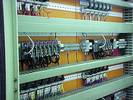
Through its very nature the smelting process in which the concentrate is heated to extract purer metal from the ore used to be environmentally unfriendly. Today as you approach the Lonmin facilities from the N4 there is no sign of the intensity of the operations, the sky being free of smoke and effluent. The reason is that Lonmin Platinum has a great concern regarding the impact their operations could have on the environment. During this smelter upgrade another R100 million will be spend just to install a sulphur capture plant, which will effectively reduce emissions of this operation by 95%. (Sulphur emissions are what cause acid rain.) The total plant (including the concentrator, smelter and refinery) is expected to be certified to the voluntary international Environmental Management System standard ISO 14001 by September this year, further commendable proof of the management's intention to protect this isolated part of North West Province from the effects of industrialisation. Although Eskom power is critical to its operations Lonmin go out of their way to assist the utility with maintaining stability on the grid. With the optimised capacity of the new smelter it is often possible to slack off throughput (and power consumption) at peak use periods.
Lonmin Platinum certainly has shown me that innovation through the introduction of new and unproven technology can go hand in hand with consideration for the environment.
Microsoft SA
(011) 257 0203

© Technews Publishing (Pty) Ltd | All Rights Reserved